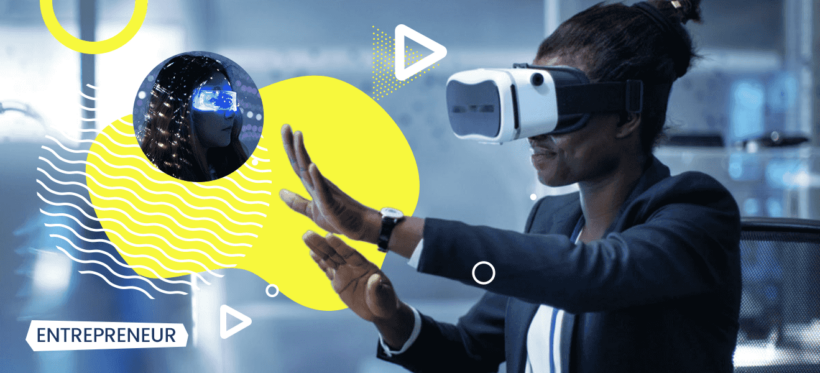Technological advances will continue playing an undoubtedly essential role in digital advertising. So what will the next round of technological development bring us in the years to come? Going further into 2022 and looking forward to 2023, we can expect to see the following key developments in AdTech and Connected TV in particular.
VR, AR and metaverse: A myth or an upcoming trend?
The metaverse is the next evolution of the internet, and giants like Facebook are hedging their bets on it. The opportunity here for the AdTech industry is ad content that exists in this virtual reality world that’s tailored to individual users.
Individually tailored ads can enhance gameplay by imbibing a degree of realism, while gamers would be willing to view a specific number of ads to unlock in-game content for their character. The opportunities for online events like concerts, interactive product placements, and other recent developments like non-fungible tokens (NFTs) all offer ad options.
CTV is destined to acquire AR/VR technologies: only two years ago Apple promised to bring the VR experience to the screens of TV owners. The newest Apple VR/AR headset was rumored to arrive this year, giving viewers an exclusive opportunity to experience sports events and live concerts in new exciting ways.
A new immersive viewing experience requires interactive advertising approaches to reach an audience. There is a high probability that VR- and AR-driven CTV will see the adoption of in-game advertising mechanics creating the possibility to place ads within the virtual environment. Many technology startups already provide capabilities to run ads programmatically within virtual environments. However, as VR and AR-based environments will likely operate as isolated ecosystems, this could possibly create a potential impediment. To resolve this potential issue, interoperability and standardization must be ensured.
AI-enhanced approach and contextual advertising
Advertisers are looking for a sound alternative as third-party cookies are headed for the door. Artificial intelligence (AI) has formed the advertising industry into the way it looks today: The state of media buying is vastly superior compared to the way advertisers conducted their business in the 2000s.
AI is all about leveraging data. But chasing cookies is not the only way, and priority should be given to analyzing digital content. There’s a lot to be examined there like keywords and engagement metrics that can be used to ensure the accuracy of contextual targeting. These AI-powered capabilities allow for better audience segmentation without violating GDPR or any other privacy standards.
AI’s ability to automate data gathering and analysis to provide every accurate contextualization for ad content, matching the right research and actions to the ideal consumer, is something that AdTech companies should focus their efforts on. Not only does it eliminate issues like human error, but also a far more individualized experience for the user. The real problem with this approach is accessing visual content like video because image recognition technology still has a long way to go. This makes it potentially difficult to use this AI-enhanced approach within a complex virtual environment like a CTV video.
Measuring ROI and the role of eye-tracking tech
Even when the ad shows up, it doesn’t necessarily mean it reaches the required objective. The average industry CTR is only 0.35%, meaning that only 35 in every 10,000 people ever engage with display ads, not to mention the blindness phenomena.
To get the most out of an advertising campaign, several critical elements must be ensured, including ad relevance, format, placement and recognition. Interactive ads are currently popular among marketers – questionnaires, hat windows, quizzes and puzzles can do a much better job of capturing viewers’ attention than just a static banner. The question that still remains is, how can we adequately measure the effectiveness (ROI) of such campaigns?
Many video ad campaigns can be judged by the number of installs, launches, session length, and more. However, not all of them are designed for taking specific actions. In this case, measuring ad recognition comes of the utmost importance, and eye-tracking technology is here to help. Short Term Ad Strength (STAS)has shown better results in brand choice from those watching TV than those exposed to social media ads, making it a CTV viewers-oriented tech. While this technology is the subject of further research mainly due to privacy concerns, there is a high chance we will see extensive use of eye-tracking in digital advertising.
Wrapping up
In 2022-23, new challenges in AdTech and CTV advertising will rise. Recent technological achievements (VR, AR, AI and eye-tracking) will help advertisers cope with them; some of these technologies are already available today. The early adopters can genuinely benefit from using such technologies and gain the upper hand in the competitive digital advertising landscape.
This article was originally published on Entrepreneur.

